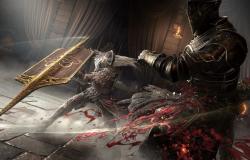
Fortunately, the times when Nintendo had Metroid in the freezer are behind us, and every so often we are presented with a new installment of the most iconic bounty hunter in the world of video games. Unlike sagas like Zelda, which have a complicated chronology and several timelines that diverge and converge around a main trunk, Metroid’s is very clear and presents a clear timeline if you want to review Samus Aran’s history to date. The order does not coincide with the release of the games, although it is not a saga very obsessed with its continuity, so each installment is quite self-explanatory and independent, although there are plots, characters and stories that do feed successive elements within the franchise.
The chronological order, as is, would be as follows:
- Metroid NES / Metroid Zero Mission [Metroid I]
- Metroid Prime
- Metroid Prime: Hunters
- Metroid Prime: Pinball
- Metroid Prime 2: Echoes
- Metroid Prime 3: Corruption
- Metroid Prime: Federation Force
- Metroid Prime 4 (Speculation)
- Metroid II: Return of Samus / Metroid: Samus Returns / [Metroid II]
- Super Metroid [Metroid III]
- Metroid: Other M
- Metroid Fusion [Metroid IV]
- Metroid Dread [Metroid V]
Where would Metroid Prime 4 be?
We still don’t know the exact place of Metroid Prime 4 in the chronology, but it will almost certainly be after Federation Force, since the end of it connects with a scene from the Metroid Prime 4 announcement trailer. We won’t go into spoils, but the connection is clear around a great rival of Samus who aims to be the main antagonist of the new Retro game (if you don’t mind spoilers, you can read about it here). We will update when we are 100% sure.
Practical tips for covering the history of Metroid
Metroid, originally created by Gunpei Yokoi, has two main branches that do not diverge, but one is inserted into the other, which would be the main one. The main one would be made up of the following games:
- Metroid NES / Metroid Zero Mission [Metroid I]
- Metroid II: Return of Samus / Metroid: Samus Returns / [Metroid II]
- Super Metroid [Metroid III]
- Metroid: Other M
- Metroid Fusion [Metroid IV]
- Metroid Dread [Metroid V]
About this, a little warning. The first Metroid is from NES and the second from Game Boy, they are extraordinary games that have an important place in history, but they can be somewhat dry if you don’t have a certain taste for retro in your veins. The first Metroid is considerably difficult in its first stages, and the second improves many formal aspects of control, although it also has its problems (such as a terrible soundtrack and the worst final boss in the entire saga). It is advisable to bet on their respective remakes. Of the first there is one on the GBA, Zero Mission, which is superior in everything to the NES, and of the second we have Samus Returns for the Nintendo DS, which was notably made by the Madrid studio Mercury Steam. If you are more motivated by a journey through the character’s history, remakes are a much better starting point. If what interests you most is Metroid’s place in video game history and how it evolved so that its design became one of the most influential in the medium (Metroidvania), then the originals are better. The notice is given.

Enlarge
The second branch would be Prime. After many years of inexplicable abandonment after the masterpiece that was Super Metroid in 1994, Nintendo finally revived the franchise in 2002, and did so twice. On the one hand, he created Fusion on the GBA, which would be the continuation of Super Metroid, progressing the series in the future. On the other hand, from the hands of the American studio Retro, Metroid Prime arrived, which would be placed as a graft in the story between the first and the second in order to be developed in several installments with its own plot focus. Their order is also quite clear:
- Metroid Prime / Metroid Prime Remastered
- Metroid Prime: Hunters
- Metroid Prime: Pinball
- Metroid Prime 2: Echoes
- Metroid Prime 3: Corruption
- Metroid Prime: Federation Force
- Metroid Prime 4 (Speculation)
Of the six that are already present on the market, facing an exploration of the history of Samus and her universe, we can do without Pinball and Federation Force. The first is a mere and fun curiosity, while the second is very cooperative-oriented, being a bit of the black sheep of the saga. It does, however, have a secret final scene that ties in with what we’ve seen in Metroid Prime 4 so far, but we wouldn’t recommend completing the game to see it.
How many of these games can I play on Switch?
Unfortunately, not all, in one of those omissions with its history in which Nintendo tends to fall more than we would like. It would be normal to be able to access most of the franchise on a platform as successful as Switch, but this is not the case. Through the Nintendo Online payment service you can play to the original versions of Metroid 1 and 2, to Super Metroid and Fusion. In addition to that, it is possible to play the remaster of the first Metroid Prime and Metroid Dread, which are native to the hybrid. And fortunately, Nintendo too Zero Mission has been introduced in the Nintendo Online catalog, although it is strangely late. But neither the remake of the two is available, nor an Other M that does not seem to be coming out of its original Wii version, nor the Metroid Prime after the first (in what we hope is something that is addressed in a u another before the fourth arrives, sometime in 2025).





